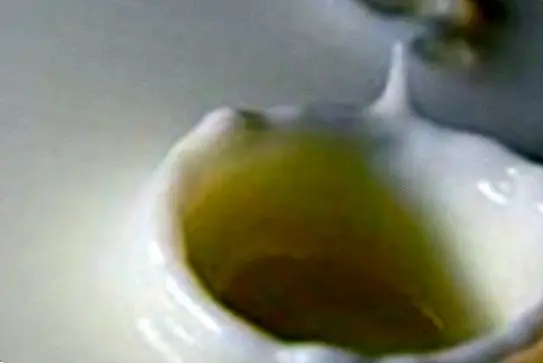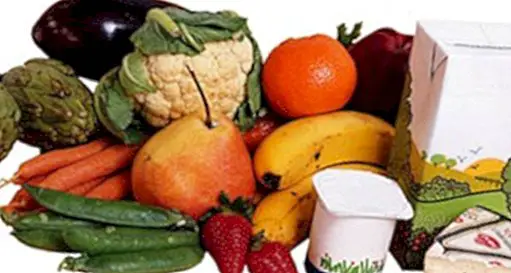Soy isoflavones: benefits for women, sources and when to take them

Within the large family of estrogens considered to be of vegetable origin, they are called phytoestrogens, highlights soy isoflavones, since they occupy a certainly preponderant place.
These molecules are extracted from soybean seeds, and as we will see throughout this article, can be a natural treatment during the menopause, because it provides interesting benefits and qualities for women's health, by acting in a similar way as do female oestrogens, although in a more gentle and light.
What are soy isoflavones?
It consists of a group of plant substances from soybeans that have a structure quite similar to human estrogens. For this reason, isoflavones They act in a similar way to how these hormones act on the organism.
In particular, the isoflavones found in soybeans are polyphenols with phytoestrogenic capacity, so that they can behave in a similar way to female estrogens, even though they are not estrogen. And, in addition, its effects tend to be somewhat milder.
What benefits do they bring?
Soy isoflavones become a completely natural alternative to correct the estrogen deficit observed in both premenopausal and menopausal women.
This is so, because the contribution of isoflavones Significantly decreases hot flashes (which in themselves are one of the main symptoms of menopause), and other associated disorders.
its estrogenic action is mild, thanks to the fact that they have a chemical structure similar to that of the female estrogens, acting in the same places as these, so that they help to replace their role.
Not in vain, many studies have not been done in this regard that help scientifically verify the Benefits of soy isoflavones, but a few years ago, the first clinical trial with Spanish women was carried out.
It included 190 patients who received 1 capsule of soy isoflavone in the morning and in the afternoon for four months. At the end of the investigation, a significant improvement in the number of hot flashes was found.

Why are they so interesting for women?
Among other interesting qualities, the truth is that Soy isoflavones provide unique properties for women, its consumption being especially useful during the period of the menopause.
Why? Fundamentally for their phytoestrogenic benefits, quality that means that they help in a positive way when it comes to reduce postmenopausal symptoms(1), as for example could be the case of relieving the effects of the so-called climacteric syndrome (set of symptoms that follow menopause such as hot flashes, headache, anxiety and depression).
In addition, it has been scientifically verified that soy isoflavones help reduce the risk of osteoporosis(which increases greatly during and after menopause) by improving the absorption of calcium (2), and avoid weight gain.
In the particular case of menopause, it has been shown that soy isoflavones are able to reduce their symptoms, thanks to compensate the natural decrease of estrogen that occurs during this stage.
But their qualities do not remain here, since they also help to reduce the risk of suffering certain diseases and pathologies whose risk (if redundancy is allowed) increases during the postmenopausal period: it lowers the levels of LDL cholesterol and total cholesterol -preventing therefore the appearance of cardiovascular diseases (3) -, favors a better absorption of calcium and also improves the defenses.
Where to find soy isoflavones and when to take them
If you are interested - or interested - in contributing soy isoflavones to your diet, in reality it is extremely simple and easy, since it is only necessary to add soya and foods derived from it to our daily diet. Yes, it is advisable to always opt for soybeans and soybean-derived organic foods(or in whose labeling it is specified that they are foods not from transgenic agriculture).

For example, you can choose whole cooked and fresh soybeans, or derivatives such as:
- Tofu:Popularly known as theTofu, it is prepared with soy seeds, water and some coagulant or solidifier so that it acquires a block appearance similar to that of cheese (hence its name).
- Soy sauce:Seasoning produced by the fermentation of soybean seeds with fungi asAspergillus oryzaIAspergillus sojae.
- Tamari:Condimento produced by the fermentation of soybean seeds with different fungi, similar to soy sauce, but which is made exclusively with soy, water and salt.
- Soy milk:Its correct denomination should be vegetable soya drink. It is a drink that is made from soaking, grinding and filtering the grains of soy.
- Miso:Pasta obtained by the fermentation of soybean seeds.
- Tempeh : Food product from the fermentation of soy with the fungus rhizopus. It usually appears in the form of a cake.
As long as the consumption of soy foods and derivatives is not contraindicated (precisely because of its contribution in phytoestrogens), you can add this type of food to your daily diet. And when is it contraindicated? For example, in case of problems with the thyroid (hypothyroidism, subacute autoimmune thyroiditis and diffuse goiter), problems with fertility or in case of pregnancy and breastfeeding.
It is also possible to find capsules of soy isoflavones in herbalists and specialized dietetics shops. However, in these cases its consumption is always advised under medical supervision.
Images | Shutterstock CONSULTED MEDICAL BIBLIOGRAPHY AND REFERENCES
Medical studies consulted:
- (1) Mark Messina (2014). I am foods, isoflavones, and the health of postmenopausal women. The American Journal of Clinical Nutrition.
- (2) C. Castelo-Branco & M. J. Cancelo Hidalgo (2011). Isoflavones: effects on bone health,Climacteric.
- (3) Durdana Husain, Kumud Khanna, Seema Puri & Mohammad Haghighizadeh (2015). Supplementation of Soy Isoflavones Improved Sex Hormones, Blood Pressure, and Postmenopausal Symptoms.Journal of the American College of Nutrition.
Other references consulted:
- Potter SM, Baum JA, Teng H et al (1998). I am protein and isoflavones: their effects on blood lipids and bone density in postmenopausal women.The American Journal of Clinical Nutrition.
- Nagata C, Takatsuka N, Kawakami N et al (2001). I am product intake and hot flashes in Japanese women: results from a community-based prospective study. Am J Epidemiol.


